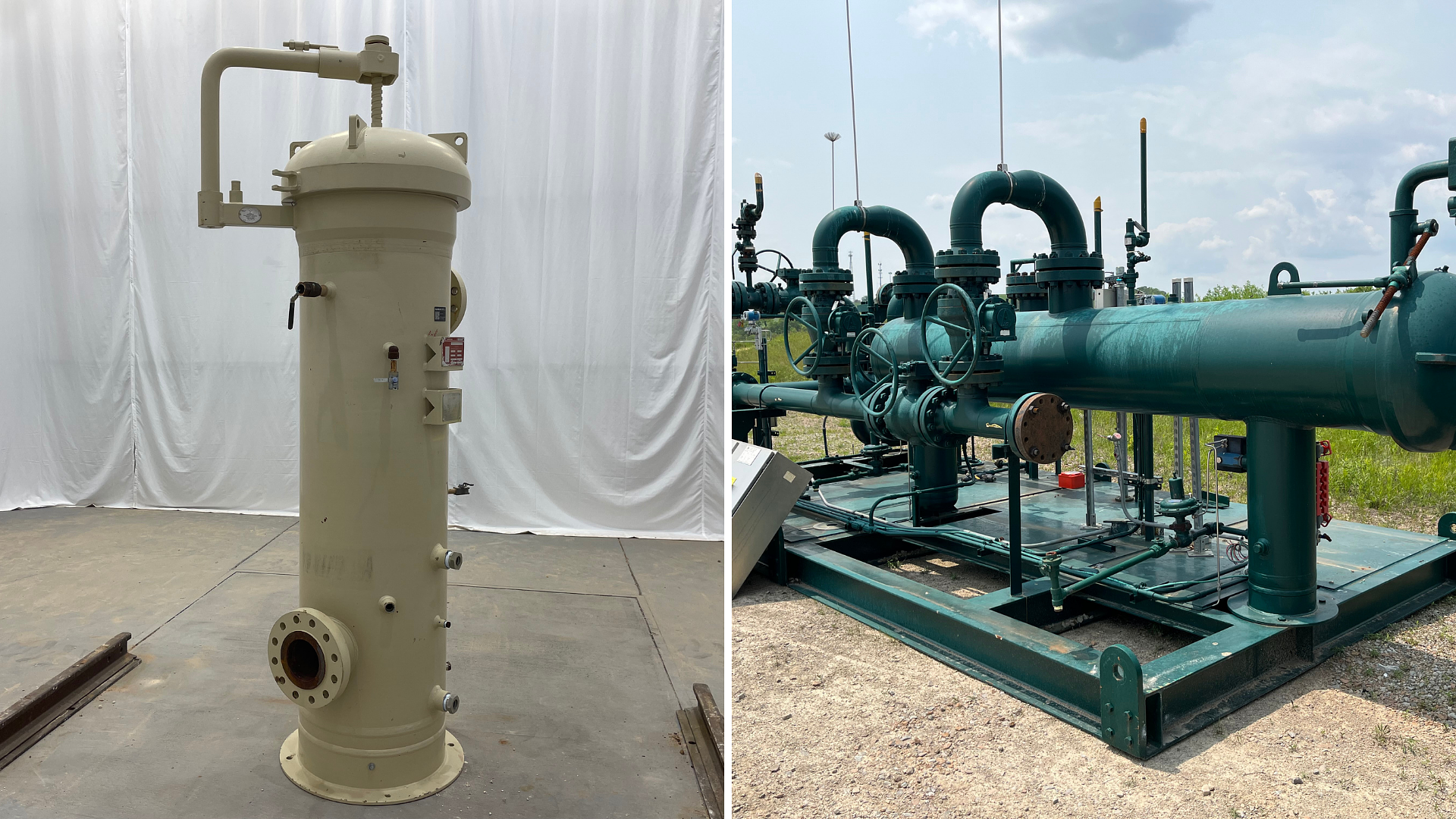Natural gas processing requires sophisticated equipment to ensure product quality and protect downstream infrastructure. Among the most critical pieces of equipment in the upstream oil and gas sector are filter separators, specialized vessels designed to remove contaminants from natural gas streams before they reach processing facilities or end users.

What Are Filter Separators?
A filter separator is a specialized piece of equipment that removes solid particles and liquid contaminants from natural gas streams through filtration rather than mechanical separation methods. Unlike standard separating vessels that rely on gravity and mechanical devices, filter separators use filter elements to capture and remove impurities including pipeline scale, water, iron sulfide, liquid hydrocarbons, compressor lube oil, and sulfur products.
These versatile units serve as the primary line of defense against contaminants that could compromise downstream equipment integrity, product quality, and safety standards required by gas purchasers.
Where Filter Separators Are Used
Filter separators find widespread application throughout the upstream sector wherever contaminants must be removed from natural gas streams. Common installation points include:
- After compressor stations to remove compressor lube oil and other contaminants introduced during compression
- Prior to dehydration units to protect glycol dehydrators from solid particles and liquid contaminants
- At delivery points to ensure gas meets pipeline specifications
- Tank batteries in oil production operations
- Gathering sites where multiple wells feed into a common system
- Processing stations as part of gas conditioning operations
In dry gas fields, filter separators may be the only separation equipment required, highlighting their importance in natural gas production operations.
Types of Filter Separators
Horizontal Filter Separators
Horizontal configurations are the most common choice for gas conditioning applications. These units offer superior handling capabilities for higher concentrations of liquids and solids compared to vertical designs. The horizontal layout provides larger liquid collection chambers and easier maintenance access to filter elements.
Vertical Filter Separators
Vertical filter separators are ideal when ground space is limited. While they may have reduced liquid handling capacity compared to horizontal units, they offer the same filtration efficiency in a smaller footprint, making them suitable for offshore platforms or crowded onshore facilities.
How Filter Separators Work
The filtration process occurs in multiple stages within the separator vessel:
Stage One: Knockout
As natural gas enters the separator, it encounters element support posts or risers that cause initial impingement. This knockout stage uses impaction, deflection, and gravity to disengage larger contaminants from the gas stream.
Stage Two: Filtration
The gas then flows through filter elements, either replaceable sock filters or coalescing filters. Sock filters trap solids while condensing liquids, while coalescing filters specifically target liquid particle removal. Coalescing occurs when entrapped liquid particles combine with other droplets or are struck by additional droplets attempting to pass through the filter.
Stage Three: Final Separation
The final stage employs wire mesh mist eliminators, vane packs, or centrifugal devices to capture any remaining liquid droplets. This ensures the resulting gas stream is virtually free of particles larger than the specified micron rating.
Single vs. Two-Stage Systems
Filter separators can operate as single-stage or two-stage systems. Two-stage vessels feature a dividing plate that creates separate chambers, allowing for different types of filtration in each stage. This configuration maximizes contaminant removal efficiency and extends filter element life.
Single-stage vessels use only one type of filter element and are suitable for applications with lower contaminant loads or specific filtration requirements.
Filter Element Selection
Modern filter separators utilize advanced filter media designed for optimal performance in natural gas applications. Depth-style cartridges with engineered gradient construction provide higher dirt-loading capacity compared to conventional filters. Materials range from polyester and polypropylene for standard applications to fiberglass and micro-glass for high-temperature or demanding service conditions.
Filter elements are available in various micron ratings, typically ranging from 0.3 to 10 microns, allowing operators to select the appropriate level of filtration based on gas quality requirements and downstream equipment protection needs.
Maintenance and Performance
Properly designed filter separators should achieve efficiencies of 99.9% for particles 1 micron and larger while maintaining a turndown ratio of 10:1. Regular maintenance includes monitoring differential pressure across filter elements to determine changeout intervals and ensuring proper liquid drainage from collection chambers.
Pneumatic level switches are commonly used in two-stage separators due to space constraints, while horizontal units may accommodate more traditional liquid level controllers in their sump chambers.
Filter separators represent a proven technology with over 70 years of successful application in natural gas processing. Their ability to efficiently remove both solid and liquid contaminants makes them indispensable equipment for maintaining gas quality standards and protecting valuable downstream infrastructure. Whether in dry gas fields or complex processing facilities, filter separators continue to serve as the workhorse of the natural gas industry, ensuring clean, specification-grade product reaches market while safeguarding capital investments throughout the production chain.
